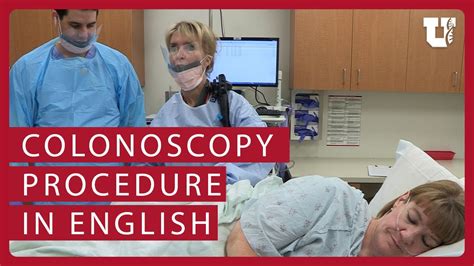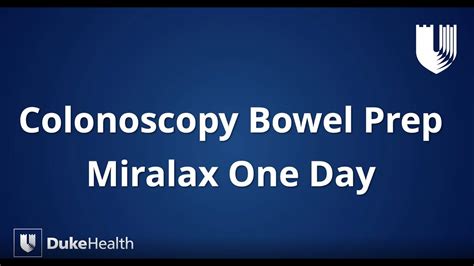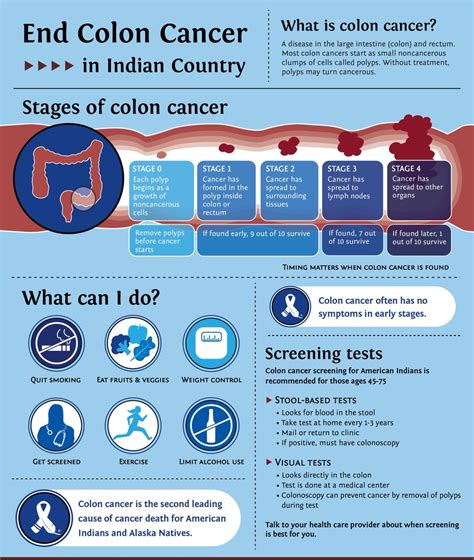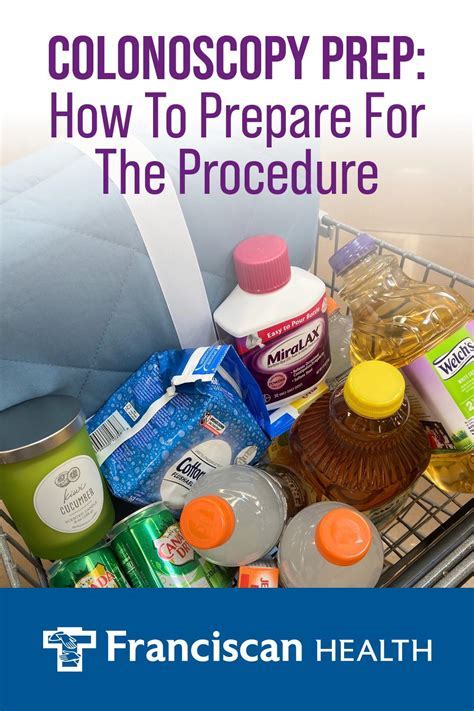Intro
Prepare for a colonoscopy with our comprehensive guide, covering bowel prep, colon cleansing, and dietary restrictions to ensure a successful procedure and accurate results, improving colon health and detecting colon cancer early.
Colonoscopy is a vital medical procedure that helps detect colon cancer, polyps, and other gastrointestinal issues in their early stages. The importance of this procedure cannot be overstated, as it can significantly improve treatment outcomes and save lives. However, the success of a colonoscopy largely depends on proper preparation, which can be a daunting task for many patients. In this article, we will delve into the world of colonoscopy preparation, exploring its significance, benefits, and step-by-step guide to ensure a smooth and effective procedure.
The preparation process for a colonoscopy is designed to cleanse the colon of any fecal matter, allowing the doctor to clearly visualize the colon's interior. This process typically begins a few days before the procedure and involves a combination of dietary changes, laxatives, and other medications. While it may seem like a hassle, proper preparation is essential for accurate diagnosis and treatment. A well-prepared colonoscopy can help detect even the smallest polyps and abnormalities, which can be removed during the procedure, reducing the risk of colon cancer.
The benefits of a colonoscopy are numerous, and its importance cannot be overstated. According to the American Cancer Society, colon cancer is the third leading cause of cancer-related deaths in the United States. However, with regular colonoscopies, the mortality rate from colon cancer can be significantly reduced. In fact, studies have shown that colonoscopies can reduce the risk of colon cancer by up to 90%. Moreover, colonoscopies can also detect other gastrointestinal issues, such as diverticulitis, inflammatory bowel disease, and gastrointestinal bleeding.
Understanding the Colonoscopy Procedure

The colonoscopy procedure itself is relatively straightforward. During the procedure, a flexible tube with a camera and light on the end, called a colonoscope, is inserted into the rectum and guided through the colon. The doctor will then inspect the colon's interior, looking for any abnormalities, such as polyps, cancer, or inflammation. If any polyps are found, they can be removed during the procedure, and tissue samples can be taken for further examination.
Step-by-Step Preparation Guide
To ensure a successful colonoscopy, it's essential to follow a step-by-step preparation guide. Here's a detailed guide to help you prepare:- One week before the procedure: Stop taking any iron supplements, as they can interfere with the colonoscopy.
- Three days before the procedure: Start following a low-fiber diet, avoiding foods such as nuts, seeds, and popcorn.
- Two days before the procedure: Stop eating solid foods and switch to a liquid diet, consisting of clear broths, soups, and electrolyte-rich beverages.
- One day before the procedure: Take the prescribed laxatives to cleanse the colon. Follow the instructions carefully, and make sure to drink plenty of fluids to stay hydrated.
- The day of the procedure: Arrive at the hospital or clinic with a companion, as you may be given sedation during the procedure. Wear comfortable clothing and avoid wearing any jewelry or metal objects.
Types of Colonoscopy Preparations

There are several types of colonoscopy preparations available, each with its own advantages and disadvantages. The most common types include:
- Polyethylene Glycol (PEG): This is a popular colonoscopy preparation that involves drinking a large amount of liquid to cleanse the colon. PEG is effective but can be unpleasant to drink.
- Sodium Phosphate: This preparation involves taking a series of pills or drinking a solution to cleanse the colon. Sodium phosphate is more convenient than PEG but can be more expensive.
- Magnesium Citrate: This preparation involves drinking a solution to cleanse the colon. Magnesium citrate is gentle on the stomach but may not be as effective as other preparations.
Common Mistakes to Avoid
While preparing for a colonoscopy, there are several common mistakes to avoid. These include:- Not following the prescribed diet: Failing to follow the recommended diet can lead to inadequate colon cleansing, reducing the effectiveness of the procedure.
- Not taking the prescribed laxatives: Failing to take the prescribed laxatives can lead to inadequate colon cleansing, reducing the effectiveness of the procedure.
- Not drinking enough fluids: Failing to drink enough fluids can lead to dehydration, making the procedure more uncomfortable.
- Not arriving on time: Failing to arrive on time can delay the procedure, causing inconvenience to both the patient and the medical team.
Managing Colonoscopy Preparation Side Effects

While preparing for a colonoscopy, some patients may experience side effects, such as bloating, cramps, and diarrhea. To manage these side effects, follow these tips:
- Stay hydrated by drinking plenty of fluids.
- Avoid solid foods and stick to a liquid diet.
- Take the prescribed laxatives as directed.
- Avoid strenuous activities and get plenty of rest.
After the Procedure
After the colonoscopy, patients can expect to feel a bit uncomfortable, with possible side effects such as bloating, cramps, and gas. However, these side effects are usually mild and temporary. To aid in recovery, follow these tips:- Rest for a few hours after the procedure.
- Avoid driving or operating heavy machinery for at least 24 hours.
- Follow a bland diet for a few days, avoiding spicy or fatty foods.
- Avoid strenuous activities and get plenty of rest.
Conclusion and Next Steps

In conclusion, a colonoscopy is a vital medical procedure that can detect colon cancer, polyps, and other gastrointestinal issues in their early stages. Proper preparation is essential for a successful colonoscopy, and by following the step-by-step guide outlined in this article, patients can ensure a smooth and effective procedure. If you have any concerns or questions about colonoscopy preparation, be sure to discuss them with your doctor.
We invite you to share your experiences and thoughts about colonoscopy preparation in the comments section below. Your input can help others prepare for their procedure and make informed decisions about their health.
What is the purpose of a colonoscopy?
+A colonoscopy is a medical procedure used to detect colon cancer, polyps, and other gastrointestinal issues in their early stages.
How long does a colonoscopy take?
+A colonoscopy typically takes 30-60 minutes to complete, depending on the individual case and the doctor's findings.
Is a colonoscopy painful?
+A colonoscopy is usually not painful, as patients are given sedation to relax and reduce discomfort. However, some patients may experience mild cramping or bloating after the procedure.
How often should I have a colonoscopy?
+The frequency of colonoscopies depends on individual risk factors and medical history. Generally, adults over 50 should have a colonoscopy every 10 years, while those with a family history of colon cancer may need to have one more frequently.
Can I eat before a colonoscopy?
+No, it's essential to follow a liquid diet and avoid solid foods for at least 24 hours before the procedure to ensure the colon is properly cleansed.
